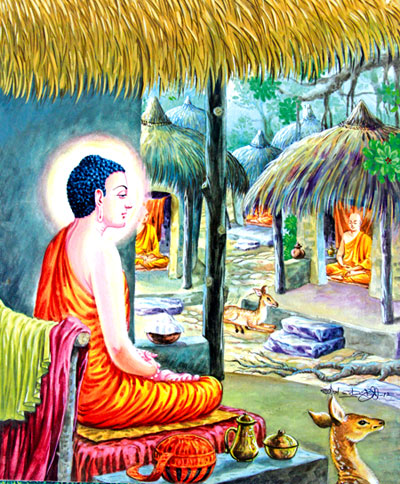The main canonical text which explains how the Buddha started to wish to become Buddha in his past lives and worked towards it, is given in Buddhavaṃsa pāḷi with its commentaries.
It is said this sutta was given by the Buddha following a question of the Venerable Sāriputta. It was at Kapilavatthu, and at this time the Buddha performed the twin miracle to reduce the conceit of his proud Sakyan family members who refused to pay respect, and arouses faith and respect in the crowd, it also followed an ancestral tradition of all the Buddhas (in the same way they performed the twin miracle before to expose Abhidhamma in Tāvatimsa).
It seems accepted among the EBT views that the Buddha never mentioned how he attained Sammāsambuddhahood by past life’s practice.
They reject the authenticity of Buddhavaṃsa, because of the themes, such the ten pāramis and many other subjects not given in four Nikāya.
Most of them also reject the ability of the Buddha to perform miracles by supernormal powers (iddhi) and the ability of the Buddha to know any subject by adverting to it, omniscient or all-knowing knowledge, sabbaññutta ñāṇa.
Among their argument, in the old Buddhism the concern was to attain arahantship by practicing the Noble eightfold path, without interest for the “details” around the doctrine.
But here I want to point out how theses views are absolutely unreasonable. How it could be that during 45 years, no one, no one among the many bhikkhus bhikkunis upāsaka, upāsika, many Brahma and devas would not ask or not even know it? Since faith in the Buddha’ s enligthment is the root of the sāsana, of all merits from the most fundamental dāna up to the attainment of Arahantship?
How it could be that no one would ask: " Bhante how did you become Buddha? How one becomes paccekabuddha? Why there are AggaSāvaka Mahāsāvaka? What they did in the past? "
The four Nikāyyist then say " it is not necessary to know it to practice".
I want to say no, this is wrong view.
You need to have strong faith in the Buddha and in kamma, in past and future life to take three refuges and follow the 5 precepts, or to ordain.
And among the many beings of various inclinations and faculties, how the Buddha would not find someone who could benefit from a discourse where the Buddha would explain it?
How he could reject this question saying " the Thatāgatha does not explain it"… Impossible.
Then concerning the miracles… Well, the Tipiṭaka are full of it… There are even vinaya rules following an Arahant who disclosed iddhi in improper ways …
And the whole knowing knowledge of the Buddha, he explained it in a sutta in majjhima Nikāya, answering the questions of a king…(of kosala if I’m correct).
This Buddhavaṃsa gives great light and necessary explanations about Buddhahood and many other topics. It has no contradiction and has been transmitted since the first, second and third Sangīti and accepted as Buddhavacana.
Sādhu sādhu sādhu ![]()
![]()
![]()
